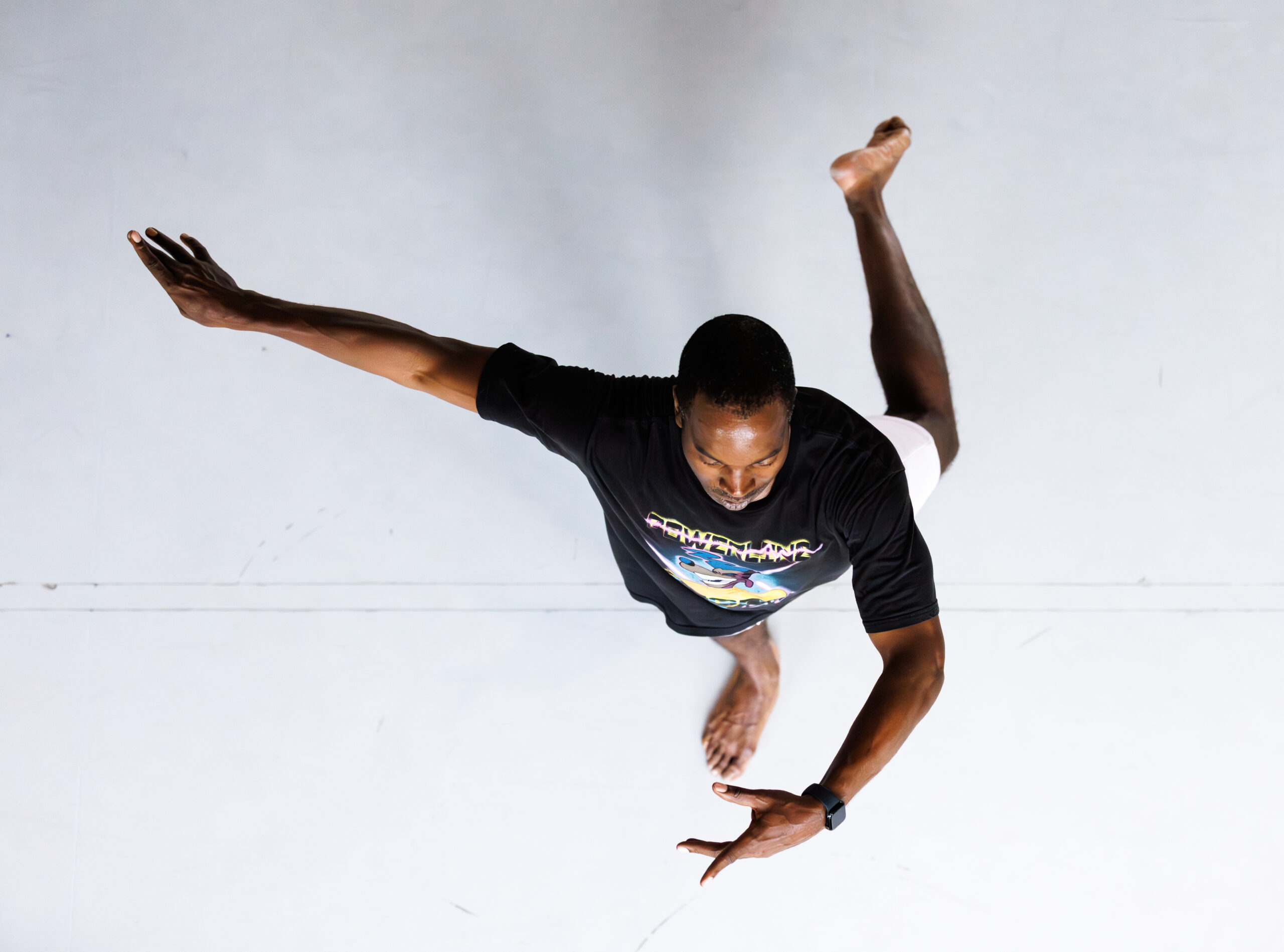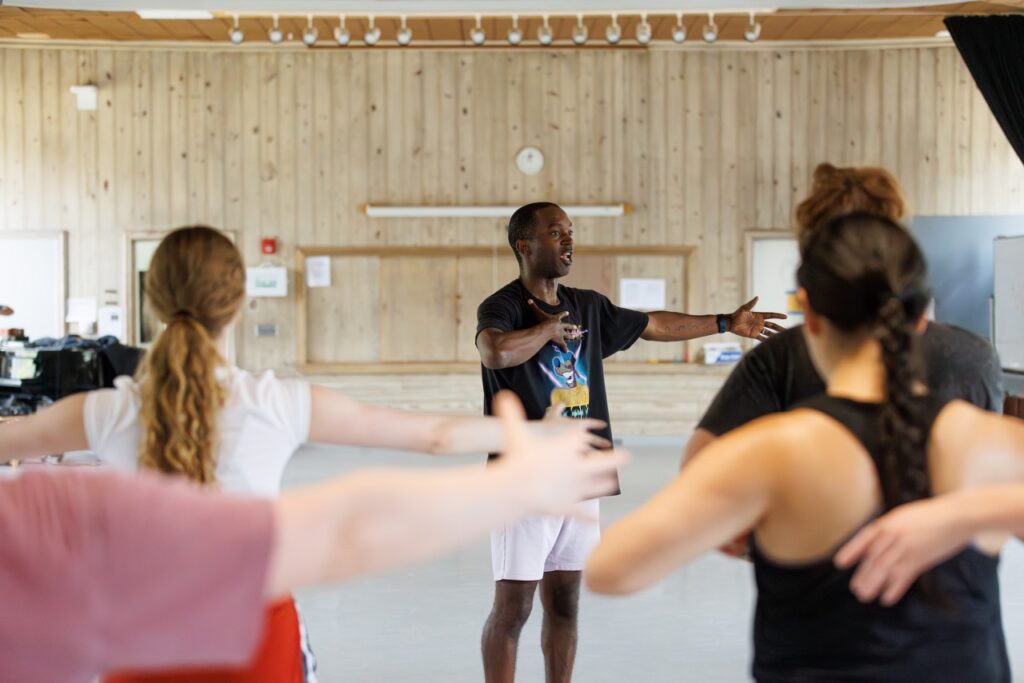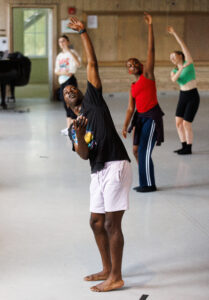
American Dance Festival, the Durham, North Carolina–based modern dance hub, celebrates its 90th season this year. Last October, Nile H. Russell became ADF’s first on-site, full-time director of education. Dance Teacher caught up with Russell in May via Zoom. It was apparent just how many balls he was juggling: Russell was fresh off the heels of the ADF Coast to Coast recruitment tour, which offered master classes and scholarship auditions and made stops at 47 venues across the country and in Toronto, Canada. He was also preparing for ADF’s three separate summer intensives. “I am overseeing all of that,” says Russell. “Creating the culture, getting faculty in, setting up the schedule, and making sure that the overall curriculum is giving the students a well-rounded experience.” He also continues to occasionally teach modern dance classes and workshops.
A graduate of Connecticut College, Russell moved to New York City in 2004, where he co-founded CaN Dance with Charly Wenzel. He also performed and taught with Silver-Brown Dance, University Settlement, LeeSaar The Company, Luis Lara Malvacias, Stefanie Nelson Dance Group, and Naganuma Dance. In 2009, Russell joined Pilobolus Dance Theater, where he later became dance captain and education coordinator. He is also a founding member of Flow Kakou, an educational nonprofit in Hawaii focused on community outreach.
Below, Russell shares what makes his new role at ADF unique, the challenges he’s faced from the pandemic, and the role models that inspired his journey.

What do you like most about ADF so far?
What I enjoy most is that it takes everything I have been doing as an educator for the past 25 years and consolidates it all into one space. As a teacher, I love seeing students in the studio, taking in this information and really making it their own. That’s been a wonderful aspect of going out on recruitment and seeing students and educators across the country. This job is really exposing me to a wide array of artists and educators that I would not have met in my daily life.
What’s the biggest challenge of teaching today’s generation and how have you navigated that?
The biggest challenge is that we just had a major global pandemic that was highly unfamiliar to a lot of us. I’m not sure how students have been coping with what’s been going on the past three years, not just with the pandemic but with politics and social issues, as well. I think what I’ve learned from that is finding comfort in looking to that generation and letting them know that I am here to help guide and prepare them as best as possible but really, this art form is in their hands. What happens next is up to them. I am just here to help pull your individual voice out. The challenge is the unknown, but that’s also the strength and the power because now you are giving them the chance to write the script and determine how to progress forward.

As a dance educator, what’s the best and worst advice you’ve ever received?
The best advice I’ve received is that we all learn differently, and all of it is valid. My gift as a teacher is to try to understand that within each person, myself included. I’ve also learned to slow down. It’s something I was constantly told when I was learning tap growing up; pace yourself, and give yourself some grace. As a teacher, you are also learning. I think the worst advice I’ve received is to just keep plowing through, like “The show must go on; keep going forward,” as opposed to knowing that I have the power to stop and change course if I feel something isn’t working in class. I think sometimes that’s the greatest lesson a student can observe within a teacher: seeing them acknowledge that they have made a mistake or that this might not be the best pathway, and watching them actively change that.
What makes your teaching style unique?
I love my swings exercise, which took me years to develop. I base it a lot on José Limón technique and on one of my college teachers, Dan Wagoner, who was a former Paul Taylor, Martha Graham, and Merce Cunningham dancer. It’s four sections that starts stationary and then begins to build until you are moving and skipping across the floor by the end. I always close my class by taking a moment to thank the sky for not falling, the ground for not cracking beneath us, and thanking each other for being here in this moment, time, and existence in these bodies.
Have you had a particular role model in your career?
My first teacher, Ledell Flynn, was my tap teacher. She was phenomenal and taught me how to learn by observation. Because of her, I think I can pick up anything very quickly. My high school mentor, Ilona Kessell, is still my mentor to this day. She introduced me to modern dance and gave me my first chance choreographing and teaching when I was 15 years old. And finally, the chair of my dance department at Connecticut College, Lan-Lan Wang. She made us students at a liberal arts school feel like we were at a conservatory in the best way. I think she was someone who was very demanding but also went above and beyond to understand who you were as an artist and really nurtured that voice.
What is your message for today’s dance educators?
It’s one of the most beautiful challenges that you can ever accept. There is immense power in allowing someone to find their creative voice and giving them a global perspective that goes back to an instinctual art form within us. And I would also say, thank you, thank you, thank you.





